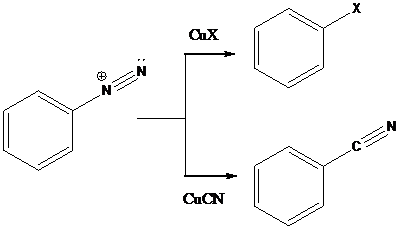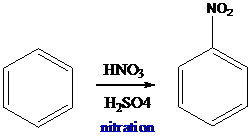
(a)
Interpretation: Major products for the given set of reactions have to be found.
Concept Introduction:
The reagents such as methyl iodide and silver oxide are given and used as the reaction conditions in the given reactions. This reaction is called Hofmann elimination. The

To find: The major product in the reaction (a) via Hofmann elimination
Identify all α- and β-positions in the starting material of the reaction (a)

(b)
Interpretation: Major products for the given set of reactions have to be found.
Concept Introduction: The general formula for primary amine is −NH2. There are several methods available to prepare primary amines. Among them, Gabriel synthesis plays a very important role for preparing it. In this method, secondary and tertiary amines are not formed as side products. It involves in three steps.
Formation of potassium phthalimide (deprotonation)
Potassium phthalimide in alkaline KOH acts as the reagent which has negatively charged phthalimide. It is formed by the reaction between phthalimide and potassium hydroxide.

Formation of R−N bond by SN2 nucleophilic substitution
The negative charged nitrogen atom in phthalimide can easily attract the positive side of R−X. In primary

Formation of primary amine by hydrolysis
The resultant product further goes for hydrolysis using hydrazine as the reagent. This reaction also follows nucleophilic substitution reaction. Finally, primary amine is formed with a side product of hydrazine derivative.

To find: Using a Gabriel synthesis, prepare the major product of (b)
Identify the correct alkyl halide involved in the formation of hexylamine

(c)
Interpretation: Major products for the given set of reactions have to be found.
Concept Introduction:
When sodium cyanide is reacted with alkyl halide, SN2 nucleophilic reaction of cyanide on alkyl group occurs. So, cyanide is introduced into alkyl group. By adding water to alkyl cyanide, cyanide is converted into
To find: Obtain the major product in the reaction (c)
Draw the nucleophilic attack of cyanide on alkyl group

(d)
Interpretation: Major products for the given set of reactions have to be found.
Concept Introduction:
Sandmeyer reactions use copper salts as the reagents. Here, aryldiazonium salt is converted into aryl halides or aryl cyanides by using copper halides or copper cyanides.

To find: The major product in the reaction (d) via Sandmeyer reaction
Do nitration of benzene

Want to see the full answer?
Check out a sample textbook solution
Chapter 22 Solutions
ORGANIC CHEMISTRYPKGDRL+MLCRL MDL
- Q1: Draw the most stable and the least stable Newman projections about the C2-C3 bond for each of the following isomers (A-C). Are the barriers to rotation identical for enantiomers A and B? How about the diastereomers (A versus C or B versus C)? enantiomers H_ Br (S) CH 3 H3C (S) H Br A H Br 省 H3C (S) (R) CH₂ Br H C H Br H3C (R) B (R)CH3 H Br H Br H3C (R) (S) CH3 Br H D identicalarrow_forward4. Which one of the following is trans-1-tert-butyl-3-methylcyclohexane in its most stable conformation? (NOTE: Correct answer must be trans- and must have a 1,3-arrangement of groups.) C(CH3)3 CH₁₂ A H,C D H₂C C(CH) C(CH3)3 C B CH C(CH) C(CH3)3 Earrow_forwardPredict the Product. Predict the major organic product for the following reaction:arrow_forward
- Nonearrow_forward3. Which one of the following is the lowest energy, most stable conformation of 1-bromopropane? H H H H H H H H CH3 HH Br H CH3 b b b b b CH3 A Br Br H H B CH3 Br H C H H H D CH3 H Br H E Harrow_forwardIn evolution, migration refers to the movement of alleles between populations. In your drawings, compare and contrast migration in evolutionary terms vs. in ecological terms. True Falsearrow_forward
- Curved arrows are used to illustrate the flow of electrons. Using the provided starting and product structures, draw the curved electron-pushing arrows for the following reaction or mechanistic step(s). Be sure to account for all bond-breaking and bond-making steps. Problem 31 I 1 :0: O: C 1 1 H Na Select to Add Arrows CH3CH2CCNa 1arrow_forwardgiven asp ...arrow_forwardNonearrow_forward
 ChemistryChemistryISBN:9781305957404Author:Steven S. Zumdahl, Susan A. Zumdahl, Donald J. DeCostePublisher:Cengage Learning
ChemistryChemistryISBN:9781305957404Author:Steven S. Zumdahl, Susan A. Zumdahl, Donald J. DeCostePublisher:Cengage Learning ChemistryChemistryISBN:9781259911156Author:Raymond Chang Dr., Jason Overby ProfessorPublisher:McGraw-Hill Education
ChemistryChemistryISBN:9781259911156Author:Raymond Chang Dr., Jason Overby ProfessorPublisher:McGraw-Hill Education Principles of Instrumental AnalysisChemistryISBN:9781305577213Author:Douglas A. Skoog, F. James Holler, Stanley R. CrouchPublisher:Cengage Learning
Principles of Instrumental AnalysisChemistryISBN:9781305577213Author:Douglas A. Skoog, F. James Holler, Stanley R. CrouchPublisher:Cengage Learning Organic ChemistryChemistryISBN:9780078021558Author:Janice Gorzynski Smith Dr.Publisher:McGraw-Hill Education
Organic ChemistryChemistryISBN:9780078021558Author:Janice Gorzynski Smith Dr.Publisher:McGraw-Hill Education Chemistry: Principles and ReactionsChemistryISBN:9781305079373Author:William L. Masterton, Cecile N. HurleyPublisher:Cengage Learning
Chemistry: Principles and ReactionsChemistryISBN:9781305079373Author:William L. Masterton, Cecile N. HurleyPublisher:Cengage Learning Elementary Principles of Chemical Processes, Bind...ChemistryISBN:9781118431221Author:Richard M. Felder, Ronald W. Rousseau, Lisa G. BullardPublisher:WILEY
Elementary Principles of Chemical Processes, Bind...ChemistryISBN:9781118431221Author:Richard M. Felder, Ronald W. Rousseau, Lisa G. BullardPublisher:WILEY





